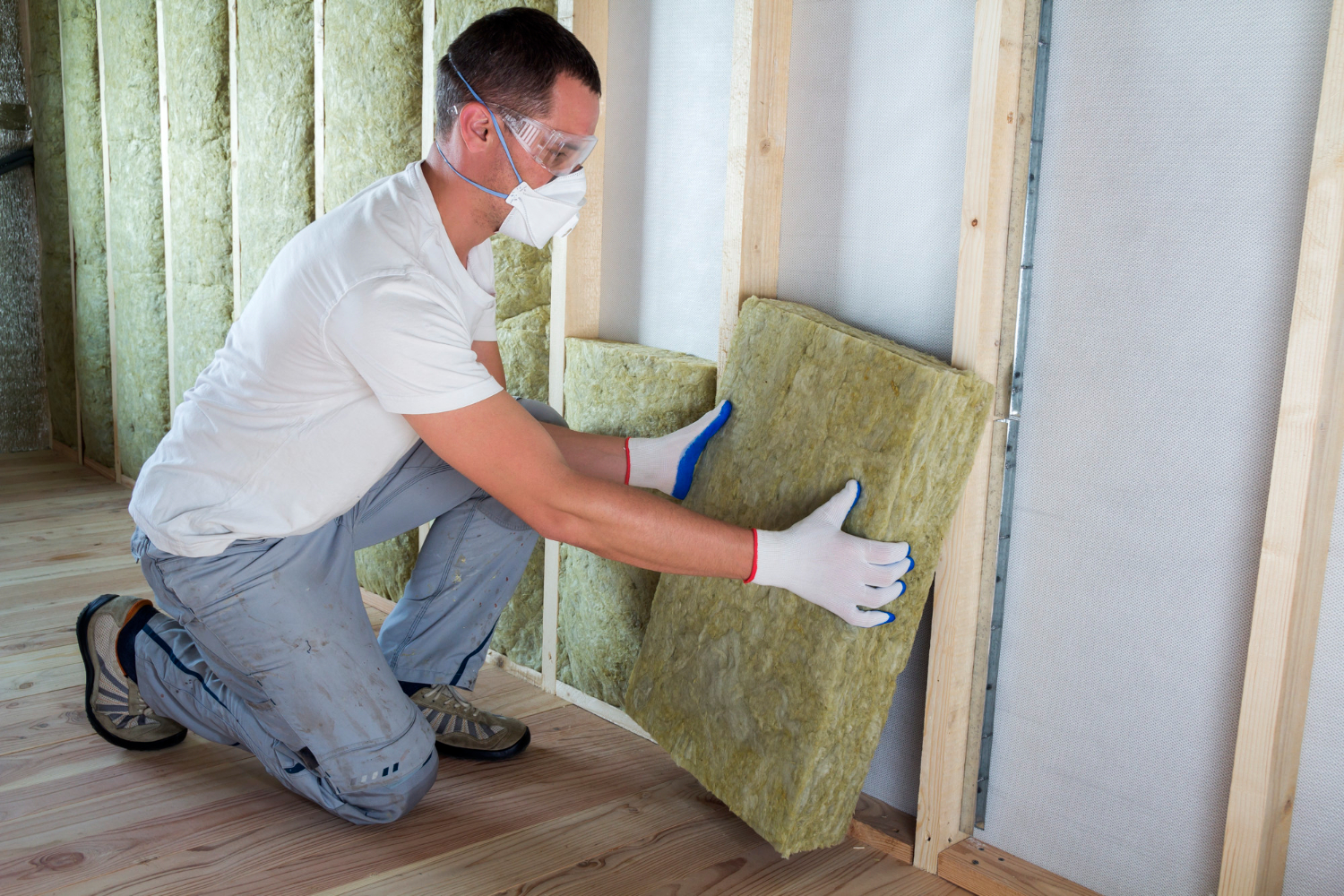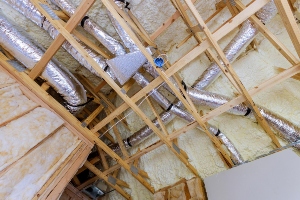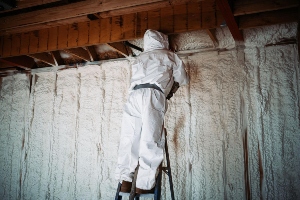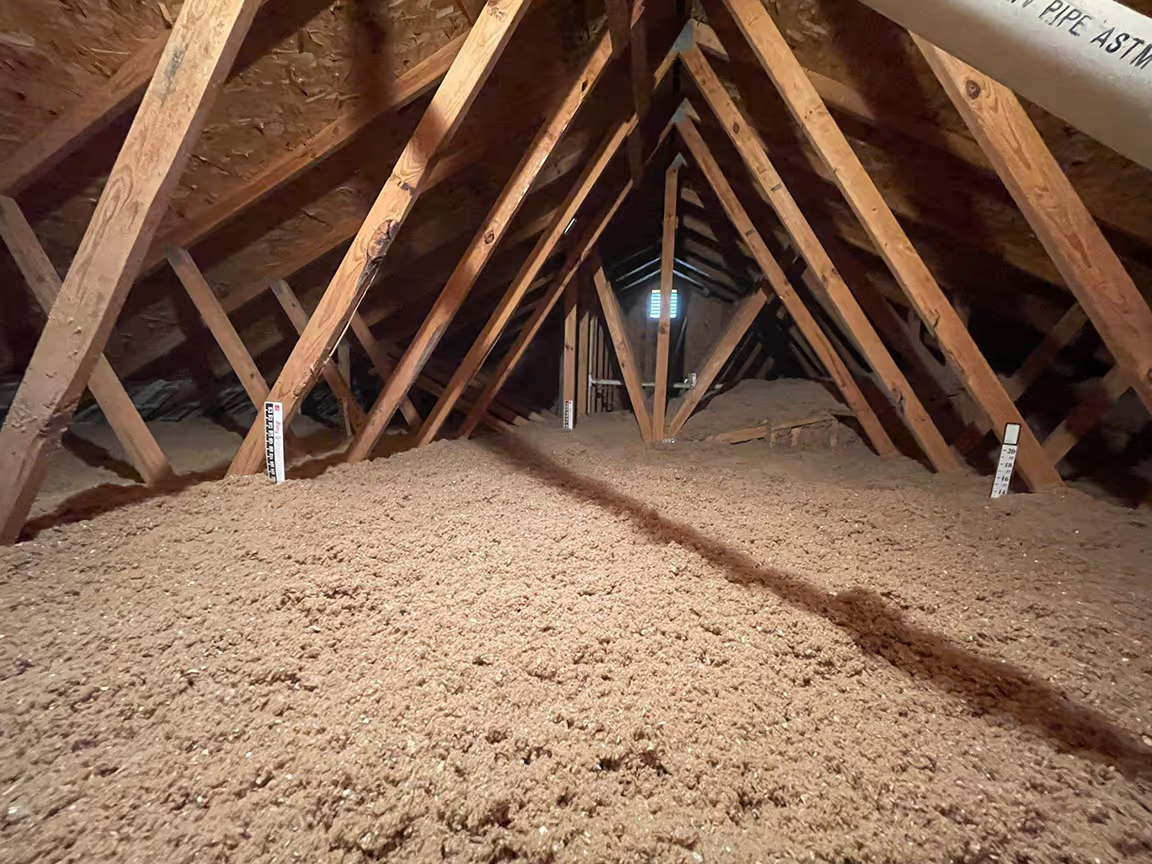Wall insulation affects every aspect of your home's comfort and energy costs. The best wall insulation material can cut your heating and cooling bills while keeping your home comfortable year-round. With so many options available, from fiberglass to foam boards, choosing the best insulation for your walls requires understanding your specific needs and budget.
The best wall insulation material depends on your climate, wall type, and whether you're insulating exterior or interior walls. Different materials work better in different situations. Exterior walls need insulation that handles moisture and extreme temperatures, while interior walls focus more on sound control and fire safety.
This article will walk you through what makes insulation effective and compare the most popular materials used in American homes. You'll learn what experts recommend for exterior walls and discover how interior wall insulation does more than just control temperature.
Let’s break down the key points you should consider:
- What makes a wall insulation material "the best"?
- Comparing wall insulation types for U.S. homes
- Best insulation for exterior walls: What the experts use
- Interior wall insulation: More than just temperature control
- Common questions about wall insulation materials
By the end, you'll know exactly which insulation material fits your home's needs and your budget.
What makes a wall insulation material "the best"?
The best wall insulation material depends on thermal resistance ratings, installation requirements, and how well it matches your specific wall type. We need to consider performance factors, budget constraints, and whether we're insulating interior or exterior walls.
Understanding R-value and thermal resistance
R-value measures how well insulation resists heat flow. Higher R-values mean better thermal resistance and energy efficiency.
Different climates require different R-values. Cold regions need R-13 to R-23 for walls. Warm areas can use R-13 to R-15.
Common R-values by material:
- Fiberglass batts: R-3.2 to R-3.8 per inch
- Spray foam: R-6.0 to R-7.0 per inch
- Rigid foam boards: R-4.0 to R-6.5 per inch
The building envelope determines how much thermal resistance we need. Walls with more air gaps require higher R-values to maintain comfort.
We should match R-value to our local building codes. Most codes specify minimum requirements for energy efficiency.
Balancing performance, cost, and installation method
Cost affects which insulation we choose. Fiberglass batts cost $0.64 to $1.19 per square foot. Spray foam costs $2.50 to $3.50 per square foot.
Installation method impacts total project cost. DIY-friendly materials like batts save labor costs. Professional installation adds $1.50 to $3.00 per square foot.
Installation complexity by type:
- Easy: Fiberglass batts, rigid boards
- Medium: Blown-in cellulose
- Hard: Spray foam, injection foam
Performance includes more than just R-value. We need materials that resist moisture, mold, and settling over time.
Some materials offer better air sealing. Spray foam fills gaps that batts cannot reach. This improves overall building envelope performance.
Homeowners who properly seal and insulate their homes, especially walls, can save about 15% on heating and cooling costs and 11% on total energy bills, according to the U.S. Environmental Protection Agency.
Interior vs. exterior wall insulation needs
Interior walls need less insulation than exterior walls. We typically use R-13 for interior walls and R-15 to R-23 for exterior walls.
Exterior wall insulation faces weather conditions. We need materials that handle temperature changes and moisture. Rigid foam boards work well for exterior applications.
Interior wall insulation focuses on sound control and minor temperature regulation. Fiberglass batts or cellulose work well for these needs.
Key differences:
- Exterior: Weather resistance, vapor barriers, higher R-values
- Interior: Sound dampening, lower R-values, easier access
Moisture management differs between interior and exterior walls. Exterior walls need vapor barriers to prevent condensation. Interior walls rarely need vapor barriers in most climates.
Comparing wall insulation types for U.S. homes
Each insulation material offers different benefits for heat retention, installation methods, and cost considerations. Understanding how fiberglass batts, blown-in cellulose, spray foam, rigid foam, and mineral wool perform in typical U.S. home construction helps us make informed decisions about energy efficiency and comfort.
Fiberglass batts, blown-in cellulose, and spray foam
Fiberglass batts are the most common wall insulation choice in U.S. homes. We can install them between wall studs during construction or renovation. They provide R-values between 3.2 and 3.8 per inch.
Blown-in cellulose fills wall cavities more completely than batts. This material reaches tight spaces that batts cannot cover. Cellulose offers R-values around 3.6 per inch and resists air leakage better than fiberglass.
Spray foam creates an air-tight seal when applied to wall cavities. Open-cell spray foam provides R-6 per inch while closed-cell reaches R-6.5 per inch. This material stops air movement that reduces heating and cooling efficiency.
Installation costs vary significantly between these options. Fiberglass batts cost the least but require careful fitting to avoid gaps. Blown-in cellulose costs more but fills spaces better. Spray foam has the highest upfront cost but delivers superior air sealing.
Pros and cons of rigid foam and mineral wool
Rigid foam boards include polyisocyanurate and other foam materials that attach to exterior walls. Polyisocyanurate provides R-values up to 6.5 per inch. These boards create continuous insulation that reduces thermal bridging through wall studs.
We can install rigid foam on the outside of wall sheathing or inside basement walls. This placement keeps the structural frame warmer and reduces condensation problems.
Mineral wool offers excellent fire resistance and sound dampening. This material maintains its insulating properties even when wet. Mineral wool provides R-values around 3.3 per inch and resists mold growth.
However, rigid foam costs more than traditional insulation materials. Some foam boards require special cutting tools and protective equipment during installation. Mineral wool can irritate skin and requires protective clothing when handling.
Which wall insulation is best for heat retention
Spray foam delivers the best heat retention performance in wall applications. The air-sealing properties prevent heat loss through air movement. Closed-cell spray foam also adds structural strength to walls.
Rigid foam board ranks second for heat retention when properly installed. The continuous insulation reduces thermal bridging that occurs with batt insulation between studs.
Blown-in cellulose provides better heat retention than fiberglass batts because it fills gaps more completely. The dense material slows air movement through wall cavities.
Fiberglass batts offer adequate heat retention when installed without gaps or compression. However, poor installation reduces their effectiveness significantly.
Mineral wool performs similarly to fiberglass for heat retention but maintains performance better in humid conditions. The material does not settle over time like some other insulation types.
Best insulation for exterior walls: What the experts use
Professional installers focus on materials that block air and moisture while providing consistent thermal performance. The right choice depends on your climate zone and wall structure type.
Materials that resist moisture and air infiltration
Closed-cell spray foam leads the field for exterior wall applications. This material creates an air barrier and vapor barrier in one application. It seals gaps that other insulation types cannot reach.
Rigid foam boards like polyiso and XPS provide excellent moisture resistance. We recommend these for continuous insulation applications. They help prevent thermal bridging through wall studs.
Mineral wool batts resist moisture better than fiberglass. This material does not absorb water and maintains R-value when wet. It also provides fire resistance that many builders prefer.
Fiberglass with proper air sealing remains cost-effective when installed correctly. The key is adding a separate vapor barrier and sealing all penetrations. This requires more labor but costs less upfront.
Why exterior wall performance matters year-round
Exterior walls face temperature swings that interior walls never experience. Summer heat and winter cold create condensation risks inside wall cavities. Poor insulation leads to ice dams, mold growth, and structural damage.
Thermal bridging through studs wastes energy year-round. Metal studs conduct heat 400 times faster than wood. Continuous insulation over the sheathing breaks this thermal bridge.
Air infiltration accounts for 25-40% of heating and cooling costs. Exterior walls have more penetrations than interior walls. Electrical outlets, pipes, and structural connections create air leaks.
Moisture control prevents costly repairs. Warm indoor air hitting cold exterior sheathing causes condensation. This moisture rots wood framing and feeds mold growth.
How to choose based on your region and wall structure
Climate zones 1-3 need moisture control more than high R-values. Use vapor-permeable insulation with proper air sealing. Avoid vapor barriers on the interior side.
Climate zones 4-8 require both moisture control and thermal performance. Install continuous insulation over sheathing. Add interior vapor barriers in zones 6-8.
Wood frame construction works well with batts plus continuous insulation. Use rigid foam or mineral wool over sheathing. This combination provides R-20 to R-30 performance.
Steel frame buildings need continuous insulation to prevent thermal bridging. Metal studs conduct heat rapidly. Use 2-4 inches of rigid foam over the exterior sheathing.
Concrete and masonry walls benefit from exterior insulation systems. Install rigid foam with proper drainage planes. This keeps the thermal mass on the warm side.
Interior wall insulation: More than just temperature control
Interior wall insulation delivers benefits beyond temperature regulation, including noise reduction and improved comfort. The installation process varies based on wall access and room purpose, with different materials serving specific functions.
Soundproofing benefits of interior insulation
Interior wall insulation acts as a sound barrier between rooms. Dense materials like stone wool and fiberglass batting absorb sound waves effectively.
We can reduce noise transmission by 30-50% with proper insulation installation. This makes conversations more private and reduces distractions from neighboring rooms.
Best materials for soundproofing:
- Stone wool (highest sound absorption)
- Fiberglass batting (good all-around performance)
- Spray foam (fills gaps completely)
Bedrooms and home offices benefit most from sound insulation. We should focus on walls that share space with noisy areas like kitchens or living rooms.
Thicker insulation provides better sound control. A 3.5-inch batt performs better than a 2-inch option for noise reduction.
What to expect during installation inside finished walls
Installing insulation in finished walls requires cutting into drywall or removing wall sections. We need to plan for dust, debris, and temporary room disruption.
The process typically takes 1-2 days per room. Contractors will protect furniture and flooring with plastic sheeting.
Common installation methods:
- Blown-in insulation: Small holes drilled in drywall
- Injection foam: Minimal wall damage, quick process
- Full wall removal: Complete access to wall cavity
We must check for electrical wiring and plumbing before starting. Fire resistance ratings matter when insulating near electrical components.
Drywall repairs add time and cost to the project. Expect minor wall patching and possible paint touch-ups after completion.
Matching insulation to room function and wall access
Different rooms need different insulation approaches based on their use and wall construction. We should consider noise levels, moisture, and wall cavity depth.
Room-specific recommendations:
- Bedrooms: Focus on soundproofing with stone wool
- Bathrooms: Moisture-resistant materials only
- Home offices: Maximum sound absorption
- Living areas: Balance of temperature and noise control
Wall cavity size determines material options. Standard 2x4 walls accept 3.5-inch batts, while 2x6 walls accommodate thicker insulation.
We can use spray foam in irregular wall cavities where traditional batts won't fit properly. This ensures complete coverage without gaps.
Access points matter for installation cost and complexity. Walls with electrical outlets or switches require more careful work around existing components.
Common questions about wall insulation materials
Wall insulation R-values determine thermal resistance, with R13 and R19 being common choices for different wall thicknesses. Modern materials can achieve R-values exceeding 30, but higher numbers don't guarantee better performance in every situation.
R13 vs. R19: What's better for walls?
R13 insulation fits standard 2x4 wall cavities that are 3.5 inches deep. This thickness works well for most homes built before the 1980s.
R19 insulation requires 2x6 wall cavities that are 5.5 inches deep. We see this in newer construction where energy codes demand higher performance.
According to the DOE, building energy codes that require improved wall insulation and air sealing have led to over 30% energy savings compared to older codes, saving U.S. consumers more than $60 billion.
The choice depends on your wall thickness. You cannot compress R19 insulation into a 2x4 wall without losing performance. Compressed insulation reduces air pockets that provide thermal resistance.
Building codes in most areas require:
- R13 minimum for 2x4 walls
- R19 minimum for 2x6 walls
R19 provides better energy savings in the long term. However, R13 performs well when properly installed without gaps or compression.
What insulation has the highest R-value today?
Spray foam insulation offers the highest R-value per inch at R6-R7. Closed-cell spray foam provides R6.5 per inch of thickness.
Polyisocyanurate (polyiso) rigid foam boards deliver R6-R6.5 per inch. We often use these for continuous exterior insulation.
Fiberglass batts provide R3.2-R3.8 per inch. While lower per inch, they cost less than high-performance options.
Blown-in cellulose achieves R3.6-R3.8 per inch. This recycled material offers good performance at moderate cost.
Mineral wool delivers R3.3-R4.2 per inch. It resists fire better than other materials.
High R-value materials cost more upfront but reduce energy bills over time. The best choice balances performance with your budget.
Do higher R-values always mean better performance?
Higher R-values don't guarantee better performance if installation is poor. Air leaks around windows, doors, and electrical outlets reduce insulation effectiveness more than R-value differences.
Thermal bridging through wall studs bypasses insulation entirely. A 2x4 wood stud has only R4.4 thermal resistance compared to R13 insulation.
Moisture problems can destroy insulation performance. Wet insulation loses most of its R-value until it dries completely.
Installation quality matters more than R-value numbers. Properly installed R13 outperforms poorly installed R19 with gaps and compression.
We recommend focusing on complete coverage without gaps rather than just buying the highest R-value material. Professional installation ensures maximum performance from any insulation type.
Conclusion
The right wall insulation material makes a big difference in your home's comfort and energy bills. We've covered the main options to help you make the best choice.
Fiberglass batts work well for most homes. They cost less and are easy to install. Spray foam gives better air sealing but costs more.
Cellulose offers good value for older homes. Mineral wool provides excellent fire resistance. Each material has its place.
Proper installation matters as much as the material itself. Gaps and compression reduce performance. Consider hiring professionals for complex jobs.
Wall insulation isn't one-size-fits-all. Your climate, budget, and home design all affect the best choice. Take time to match the material to your specific needs.
Good insulation pays for itself through lower energy bills. It also makes your home more comfortable year-round. The investment in quality materials and installation is worth it.
Start with the areas that need it most. You can always add more insulation later as your budget allows.
Schedule your wall insulation installation today to improve energy efficiency and year-round comfort in your home.






